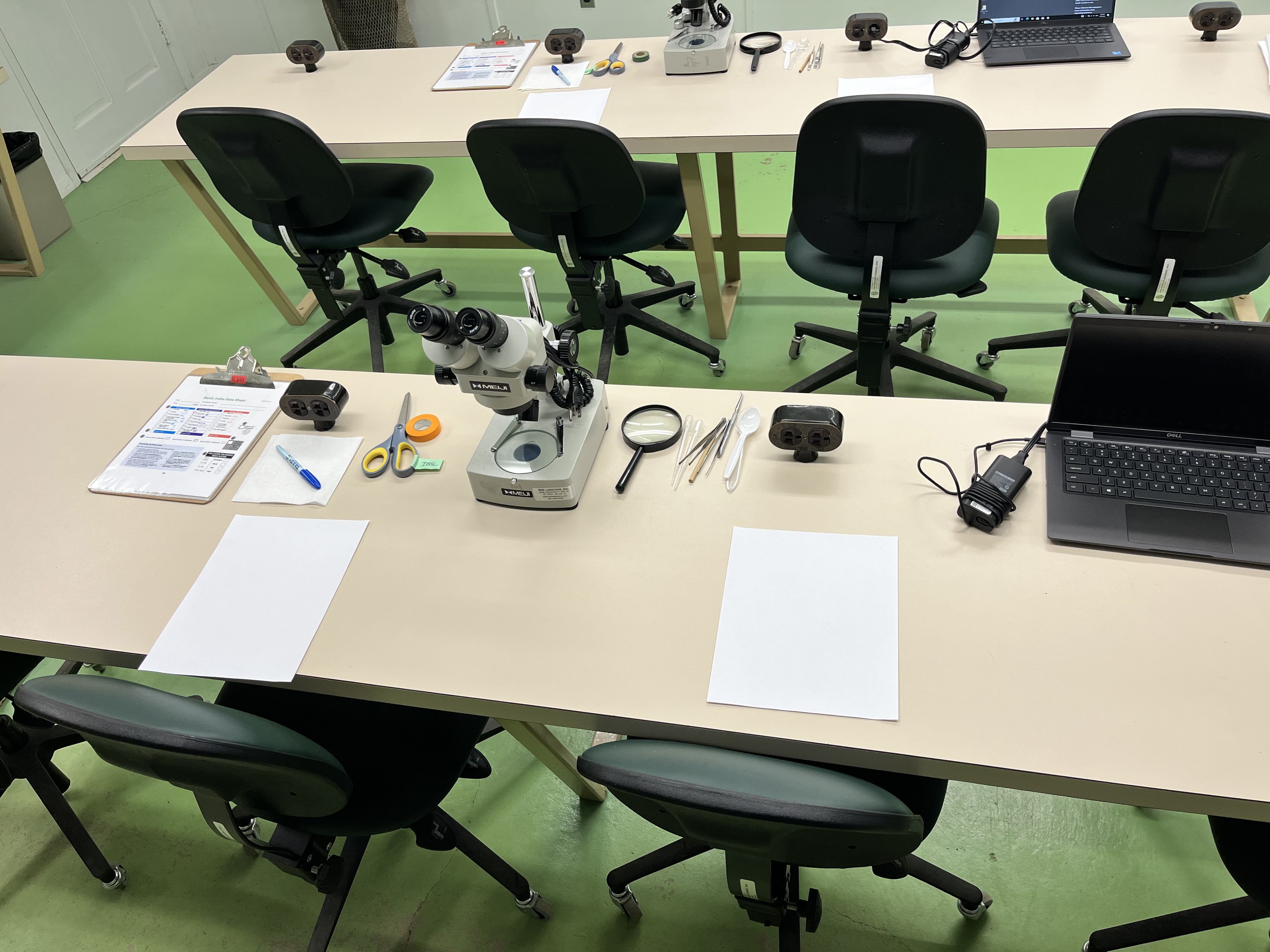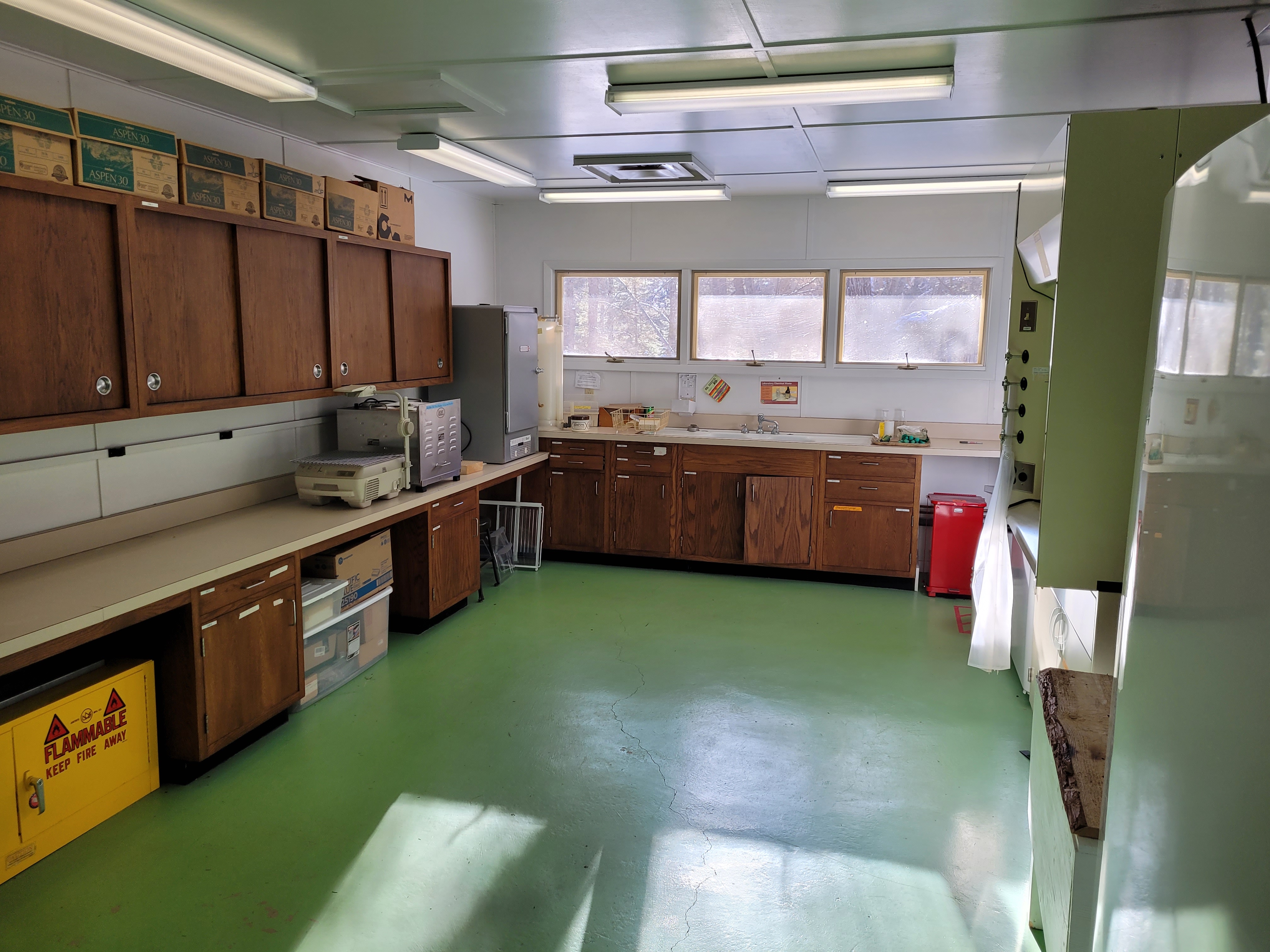Itasca Biological Station and Laboratories features technology-enabled classrooms, well-equipped research and teaching laboratories, and a library/computer lab with high-speed internet connection for students and researchers. Eleven well-equipped laboratories are located in six buildings. Seven labs are available year round. Station facilities are serviced by high-speed wireless, including teaching/lab spaces and faculty cabins. A well-developed collection of birds and mammals and a robust herbarium are available for study. The station also houses collections of algae, fish, reptiles, and amphibians.
Biome Center (building #75)
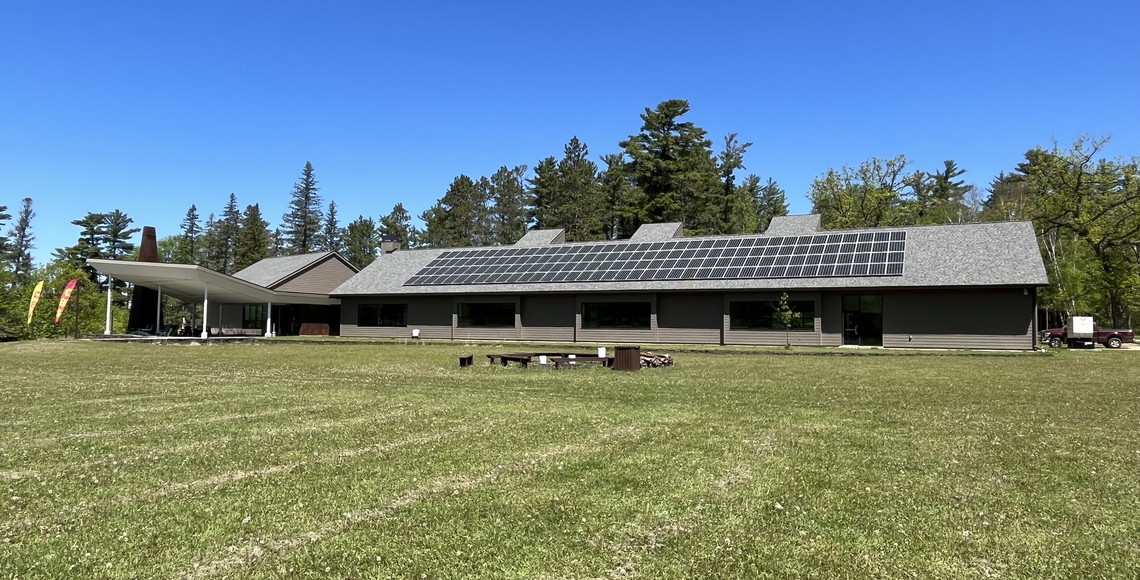
The Biome Center (building 75) was built in 2014. It was built to exceed LEED Gold status, with sustainable amenities including 16-well geothermal heating and cooling system, efficiency plumbing, and operable windows and skylights for cross ventilation. The facility generates electricity 365 days a year through photovoltaic solar panels. It features 12,000 square feet of technology-enabled classrooms/laboratories, lab prep spaces, computer/library, seminar room, and station administrative offices. The building serves serves students and researchers and provides space for public engagement, academic conferences, and meetings. The Biome Center is open year-round.
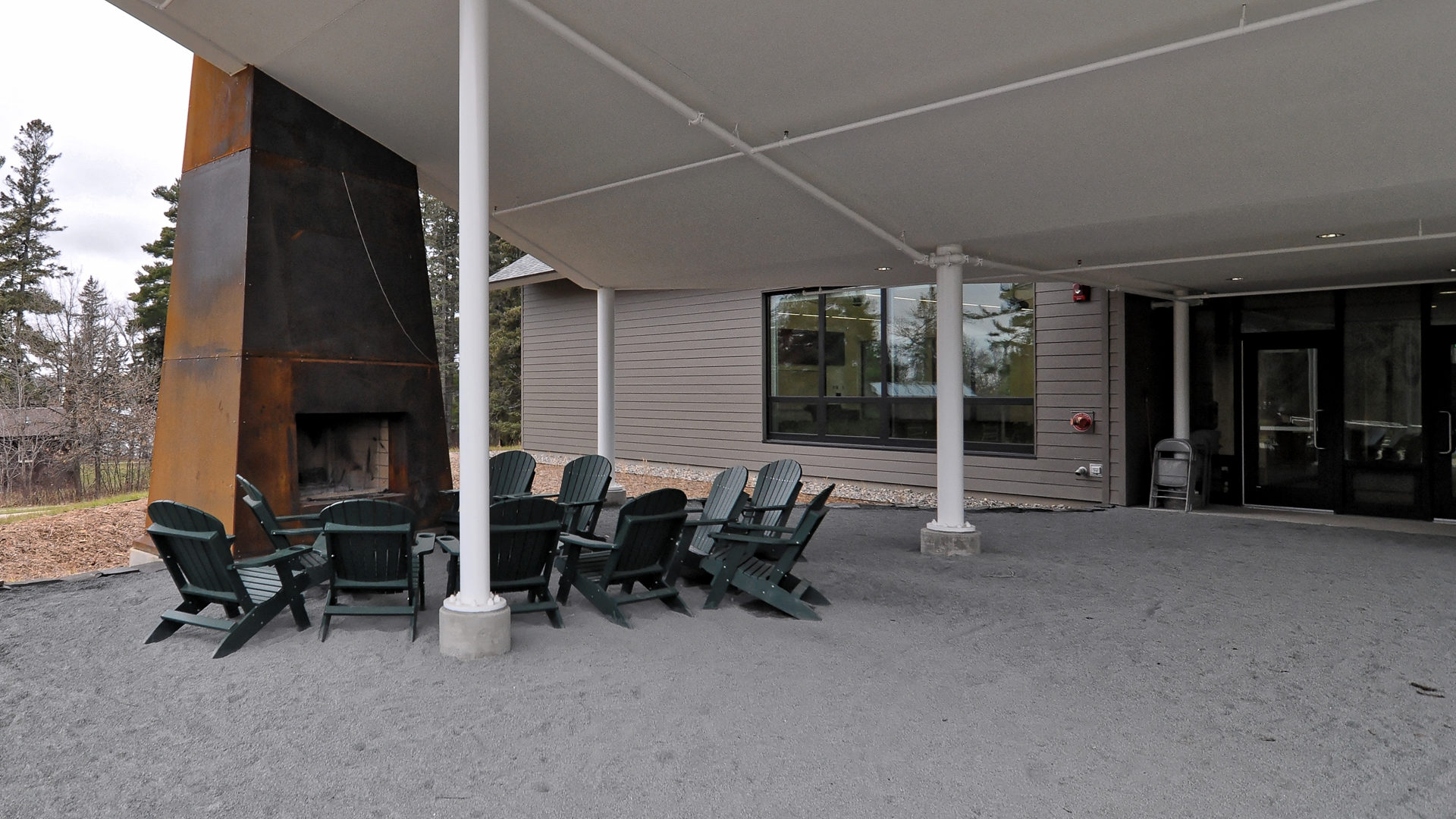
The entrance features an overhang covering a gravel patio with outdoor fireplace.
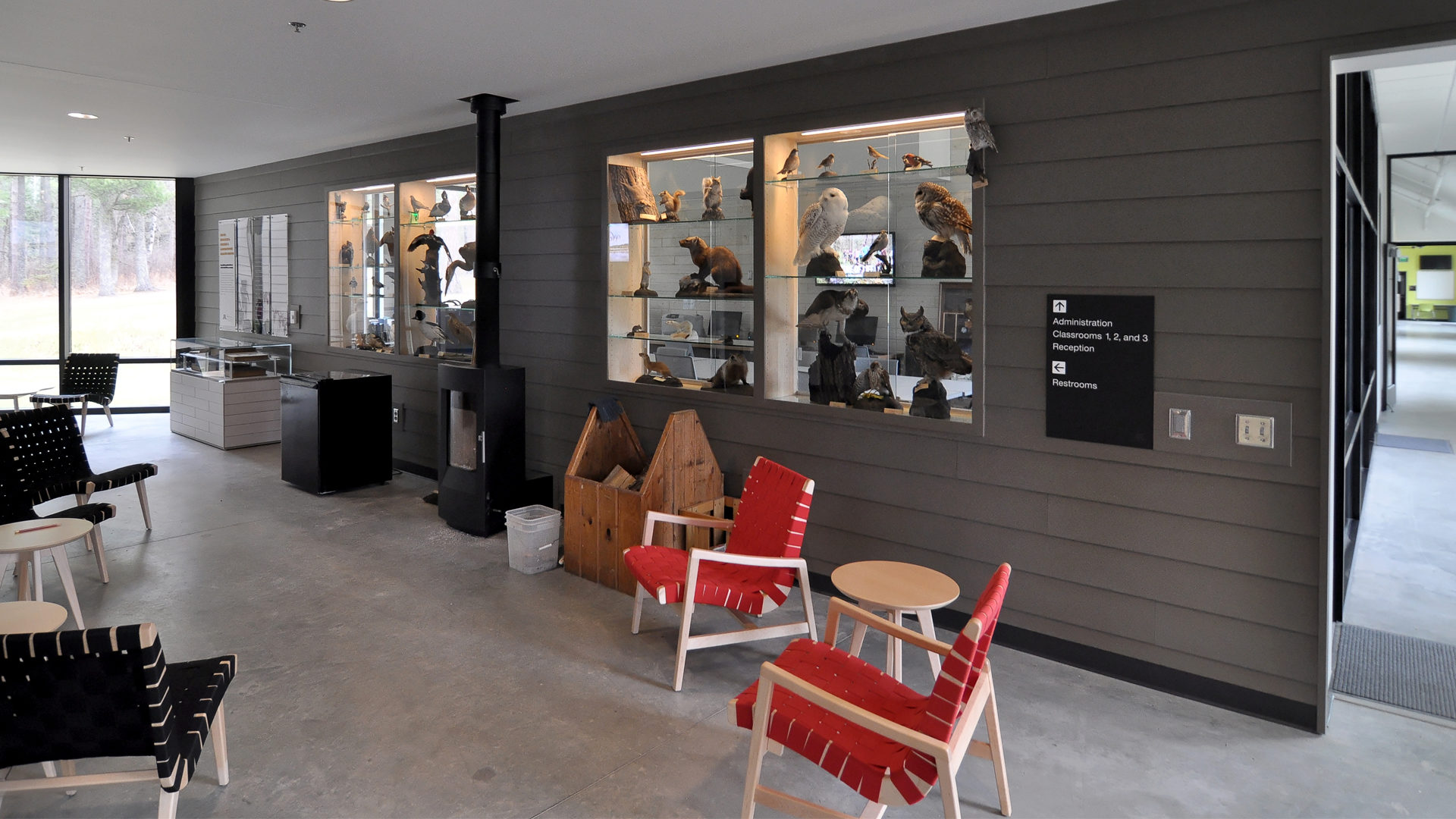
The foyer has a woodstove, kitchenette area, soft seating and showcases taxidermy animal specimens.
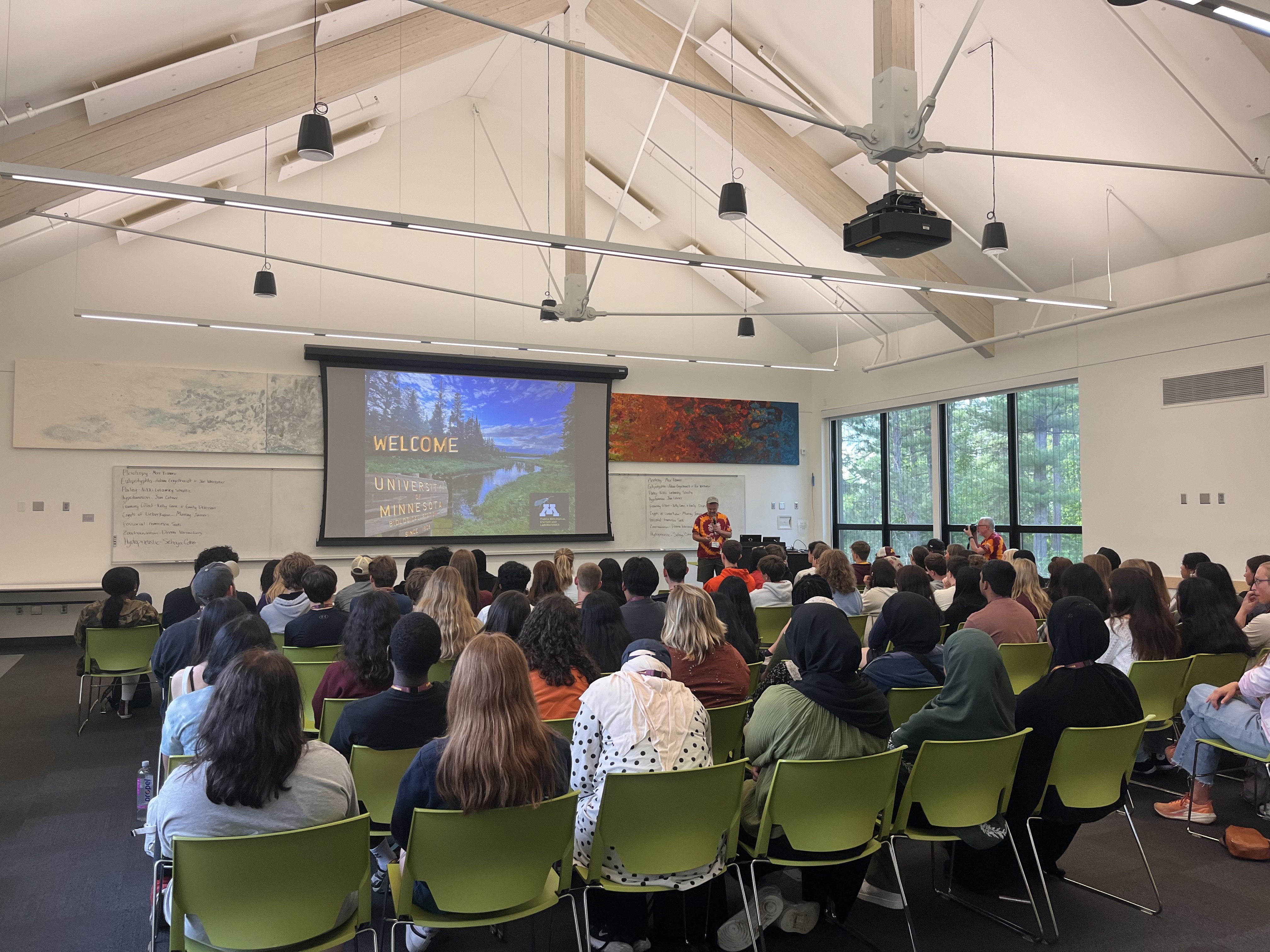 The seminar room has flexible seating and tables for up to 150 people.
The seminar room has flexible seating and tables for up to 150 people.
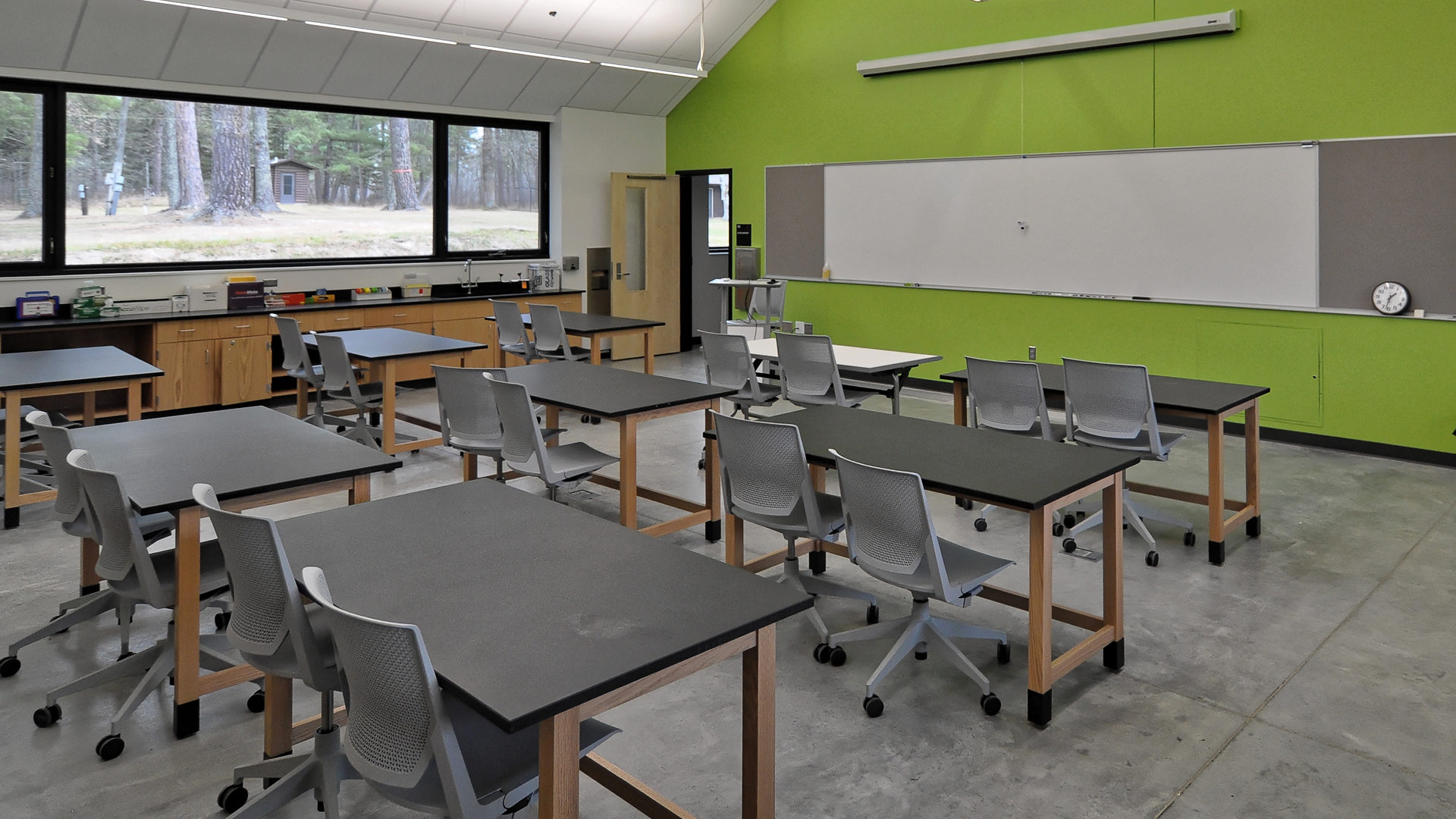
The Biome Center has three classrooms/laboratories.
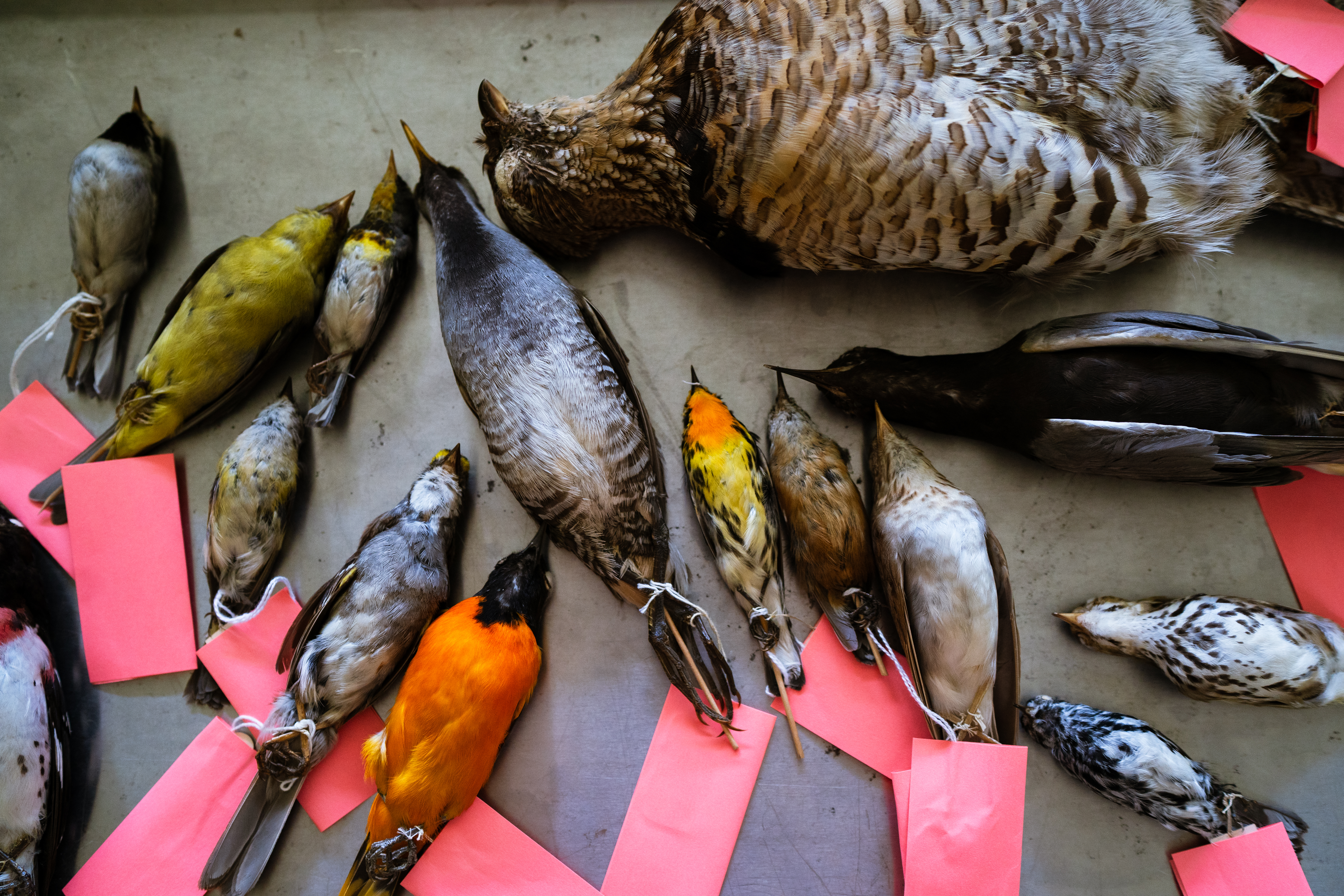
The Biome Center houses our ornithology and mammalogy teaching collections.
Think/Write library computer lab (inside Biome Center)
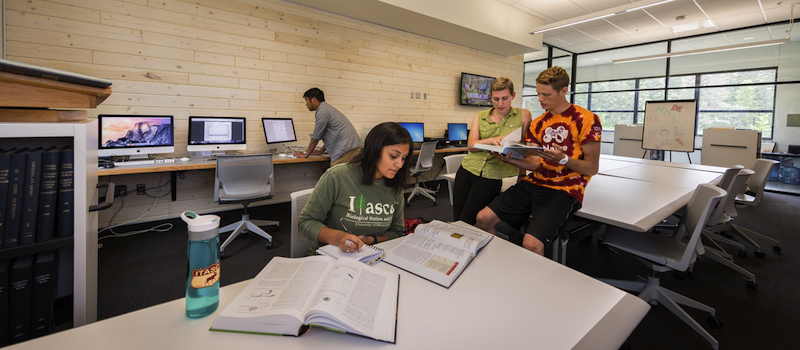
The Think Write room, located in the Biome Center, houses a several computer work stations, printers, and a physical library with hard copies of student theses, books, maps, and other Itasca relevant resources. Our Station Publications and Digital Resources page has more information about our library collections.
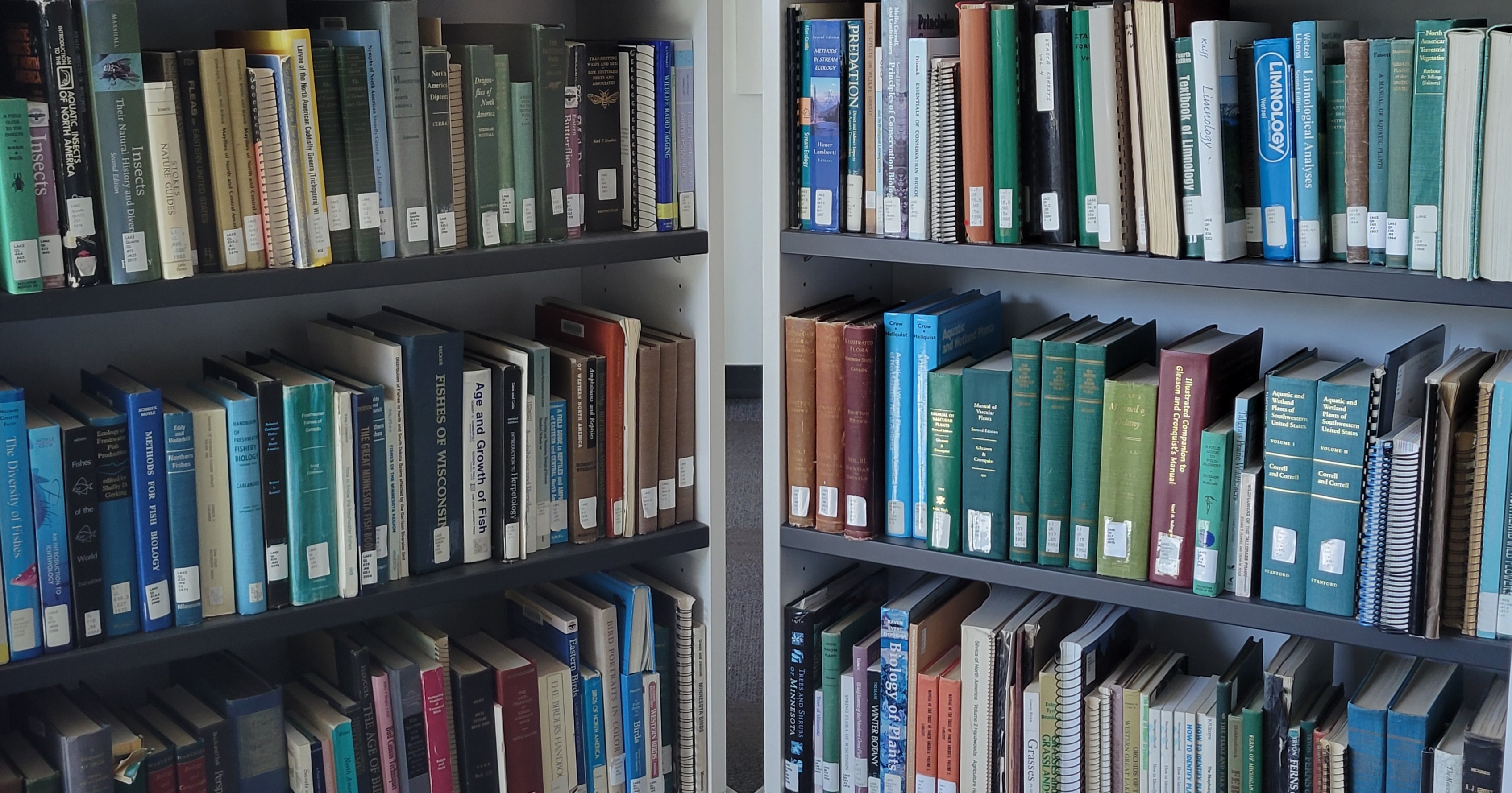
John R. Tester Science Hub ("Tester's Hub" - building #43)
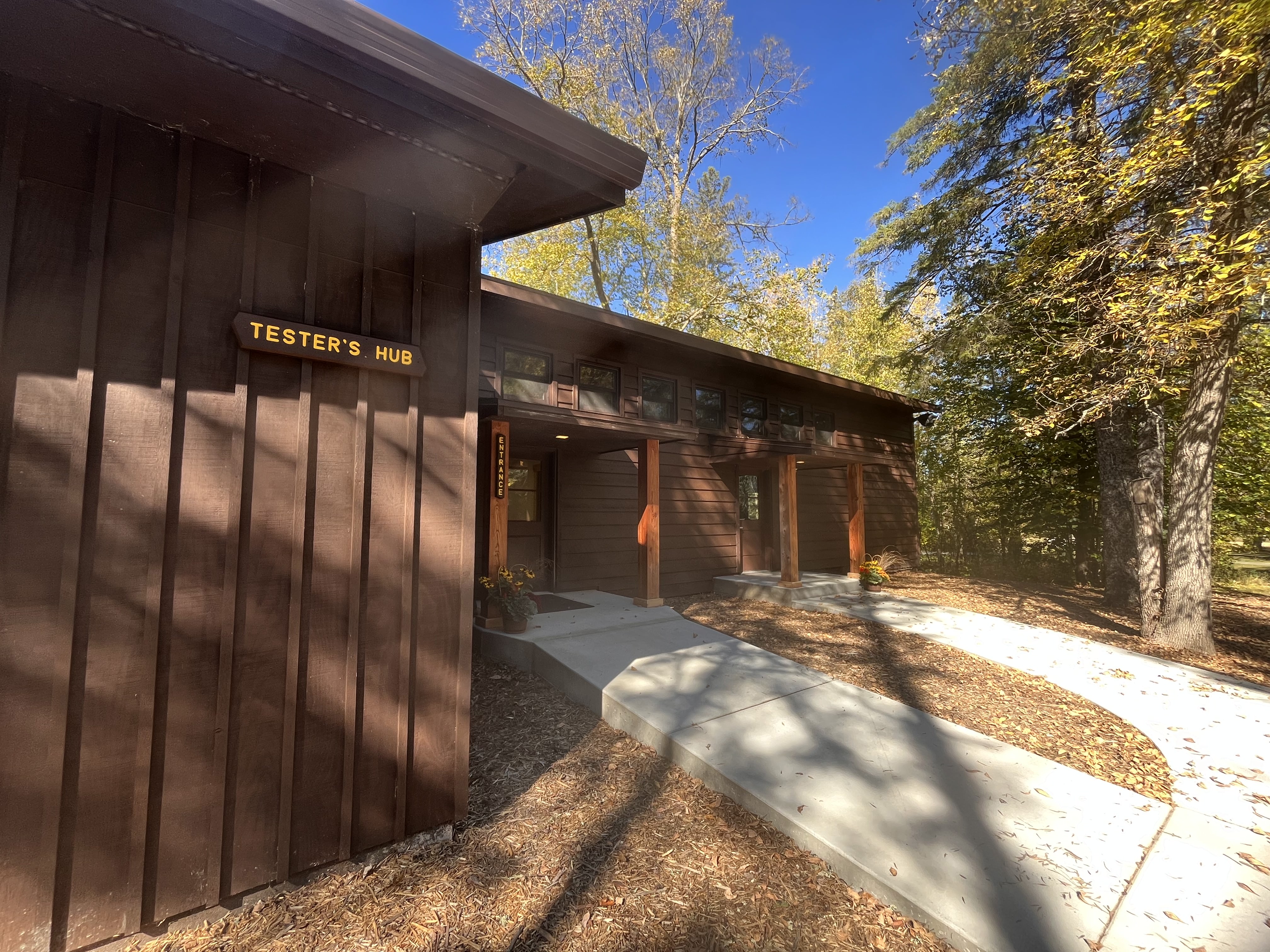
Tester's Hub is dedicated in the memory of John R. Tester, a long-time professor, researcher and leader in the College of Biological Sciences at the University of Minnesota. It is situated at the end of the circle drive that all vehicles use to enter the Itasca campus. Originally constructed in 1951, the building was the home of the station administrative offices, mailroom, and taxidermy museum for several decades. In the 2000s, the building had fallen into disrepair and was closed when the Biome Center was built. After reconstruction, the building was reopened in the fall of 2024 and named in honor of John Tester. The function of this 'hub' building fits the Tester legacy. It is about science, nature, and community-building. It serves as a welcome spot for station visitors, meeting space for station users, and launch point for tours and interpretive science.
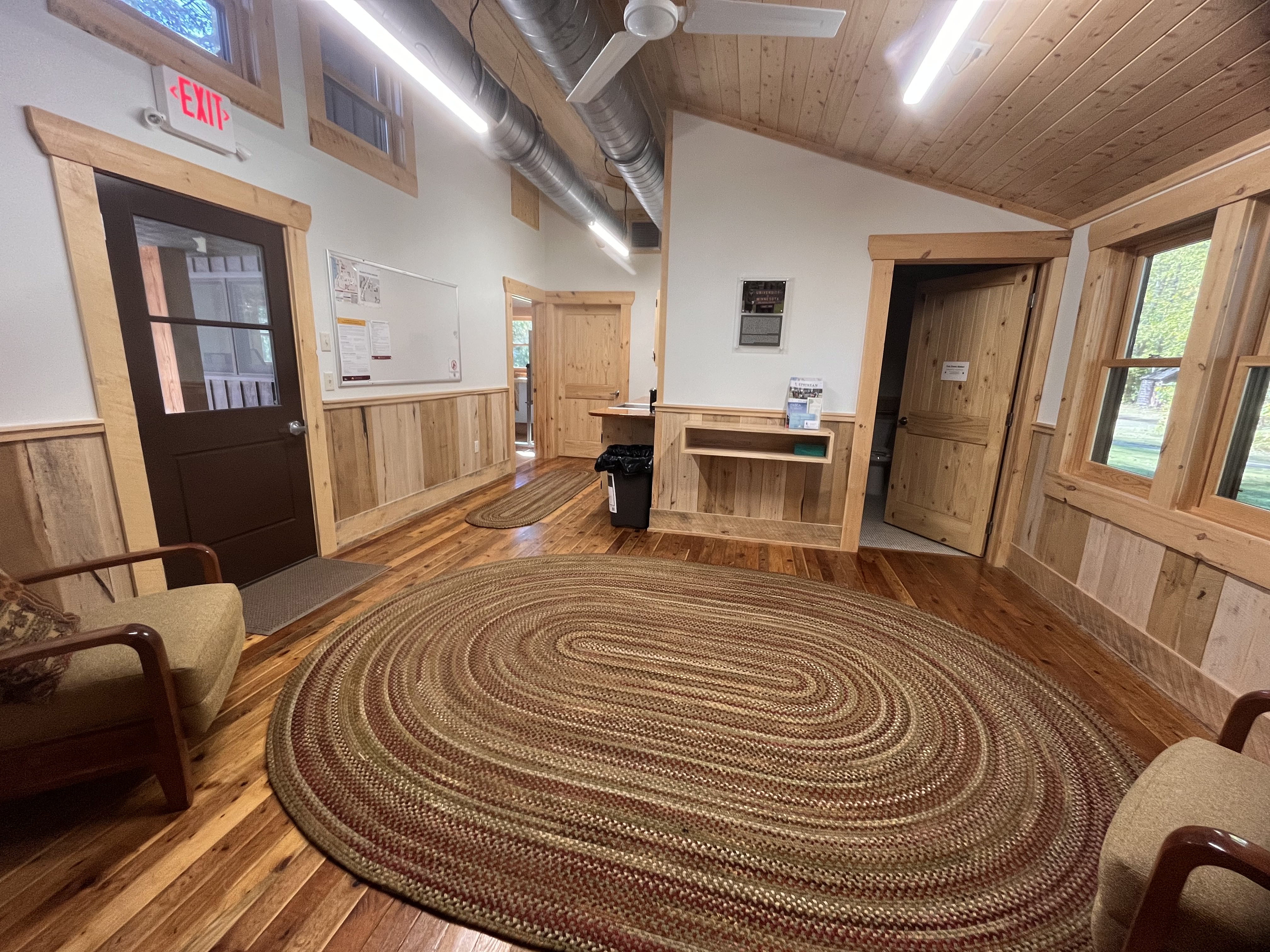
Tester's Hub foyer
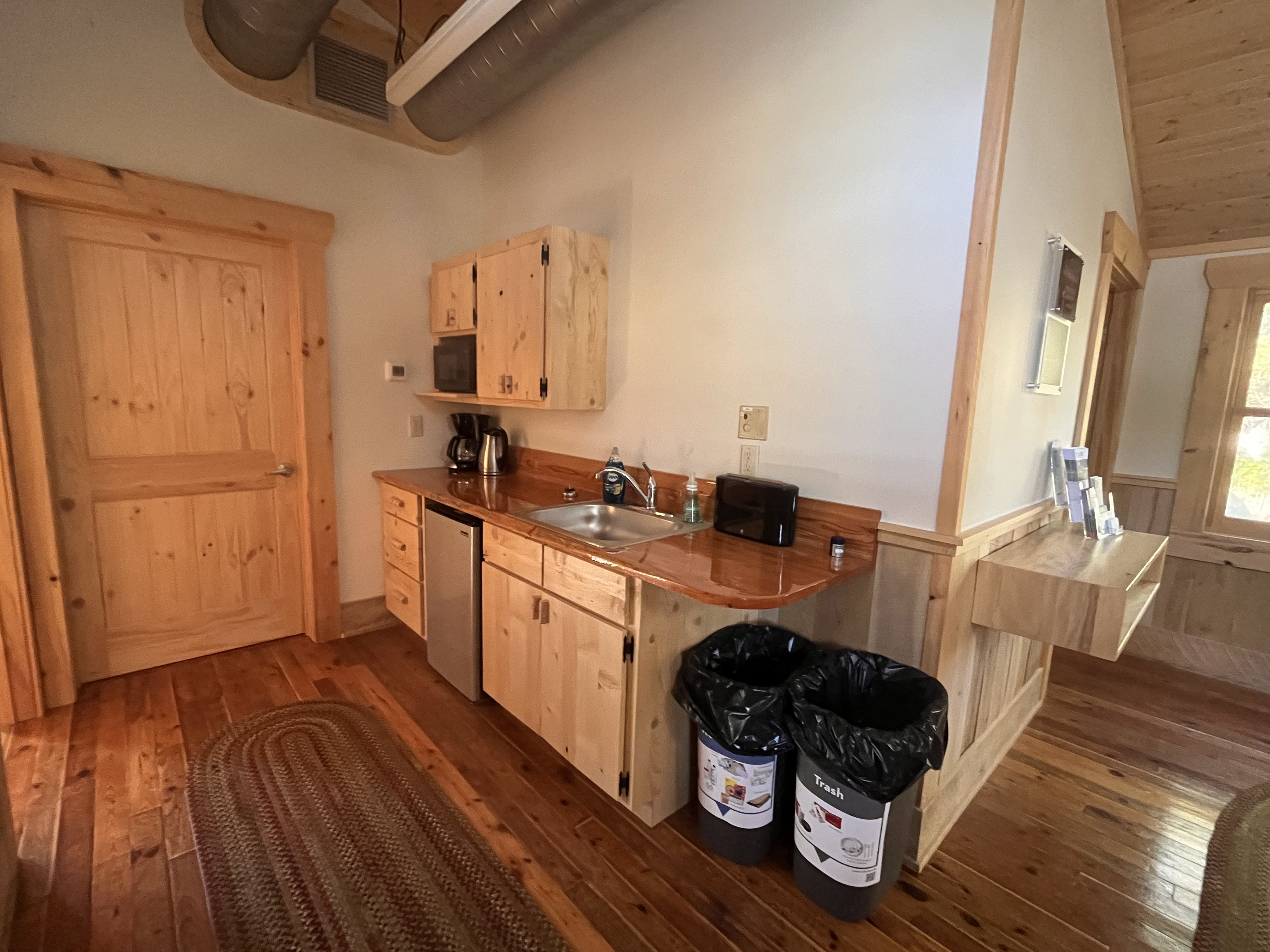
Tester's Hub kitchenette
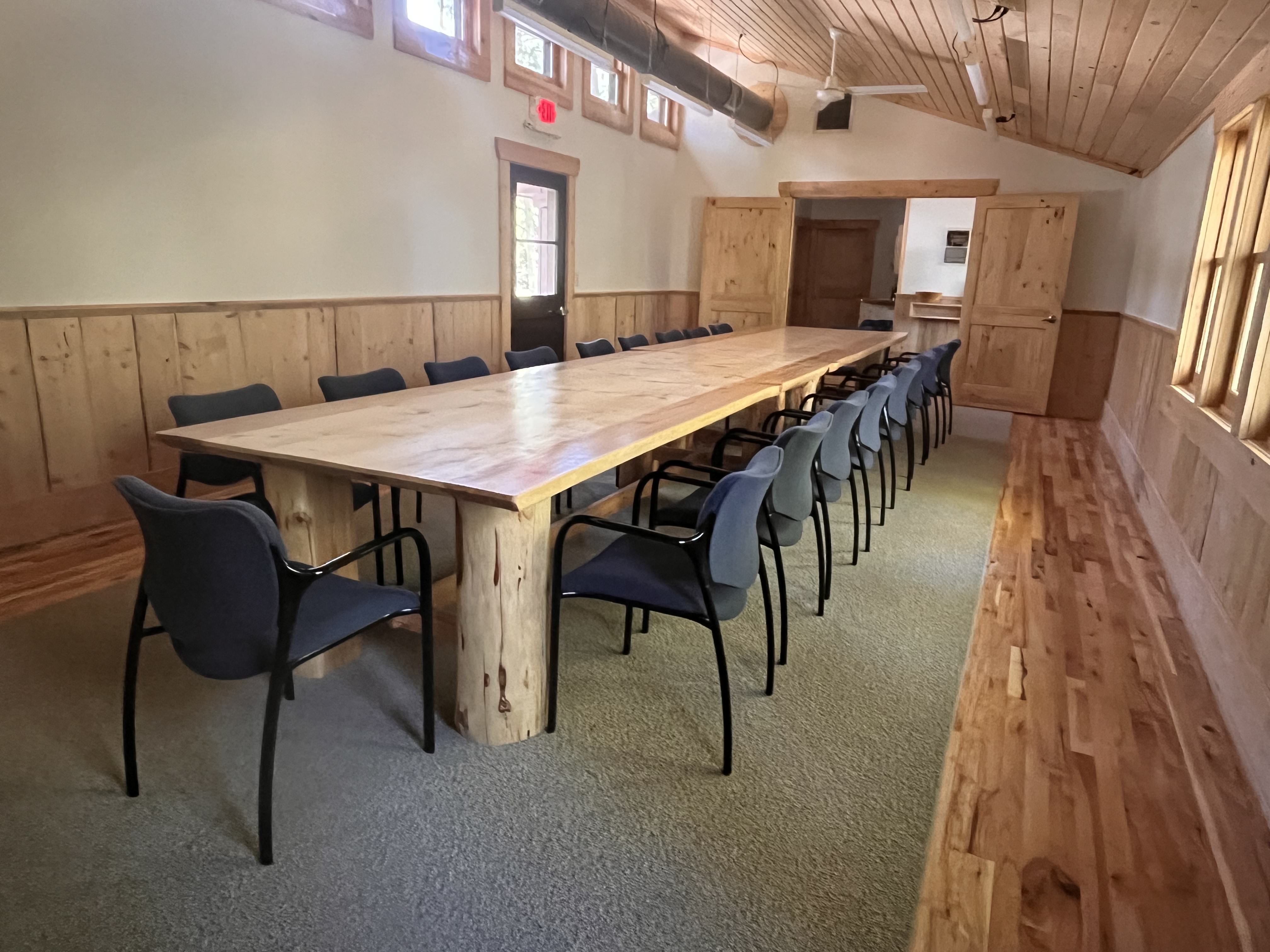
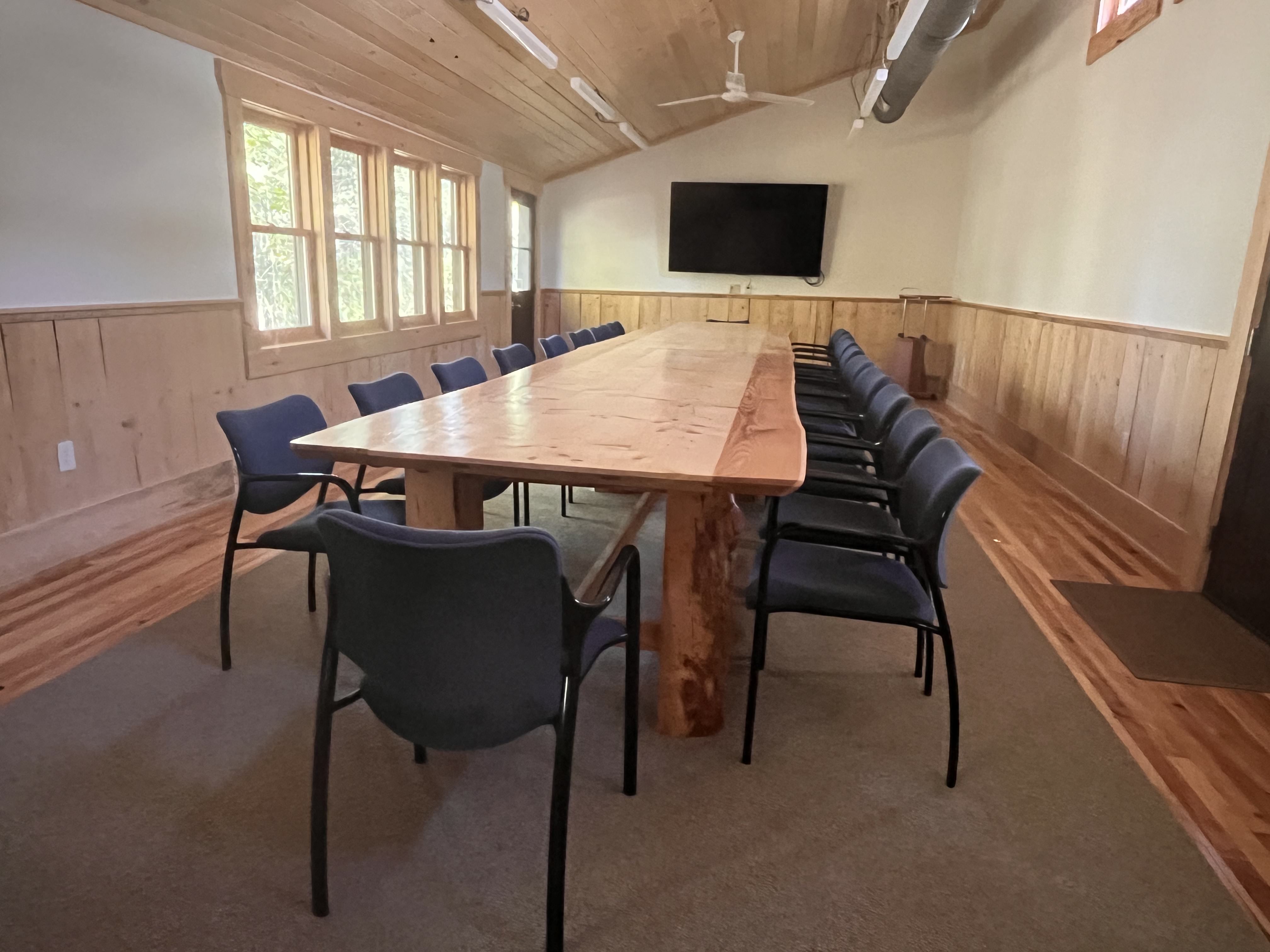
Tester's Hub conference room
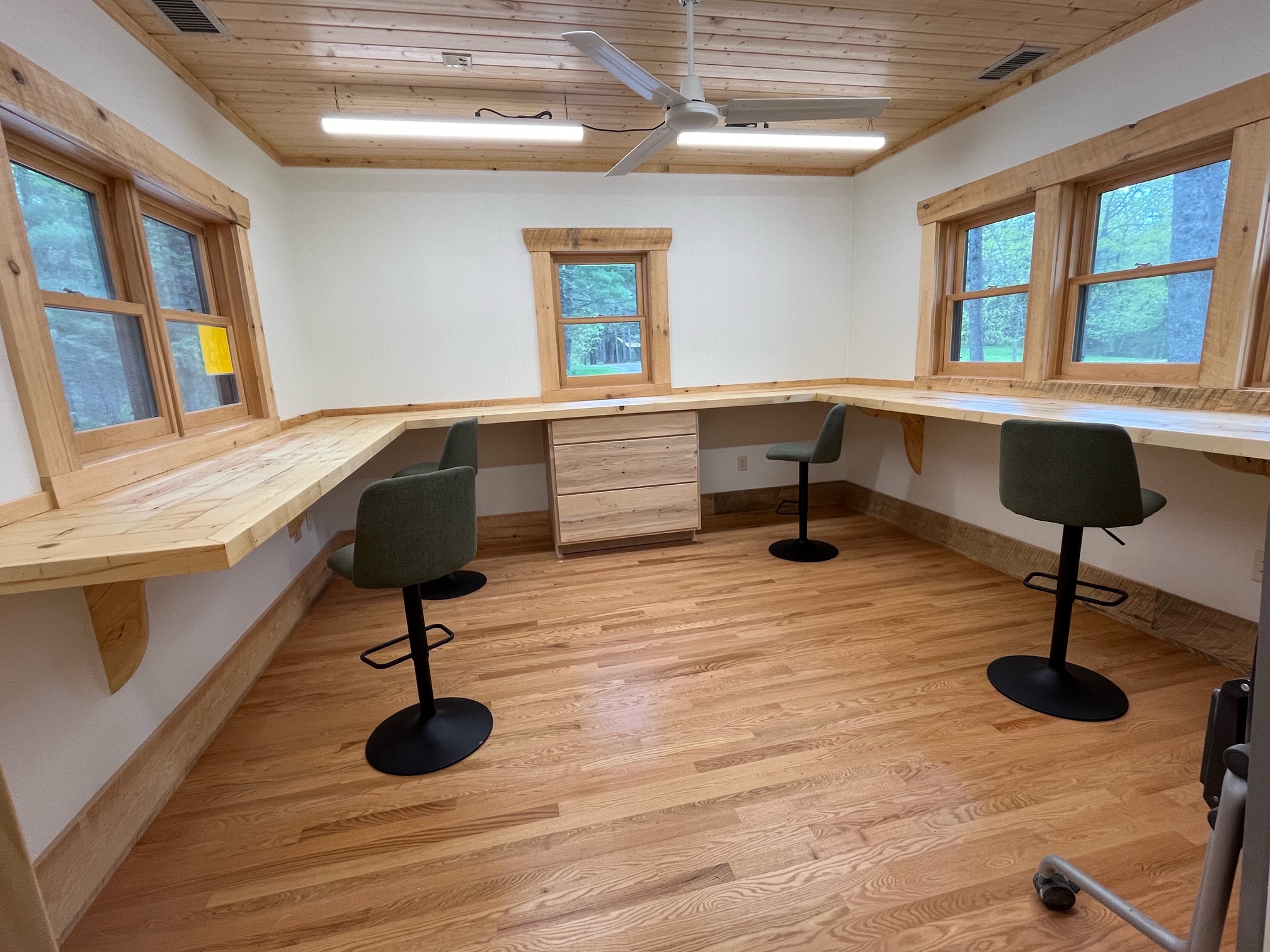
Tester's Hub flex office space
Research Laboratories (building #48)
The Research Laboratories building (building 48) was built in 1966. It is operational year-round and houses designated research spaces with fume hoods, -80 freezer, Millipore water purification system, chemical storage, and our stock room. This building also houses teaching space. The Research Laboratories building is open year-round.
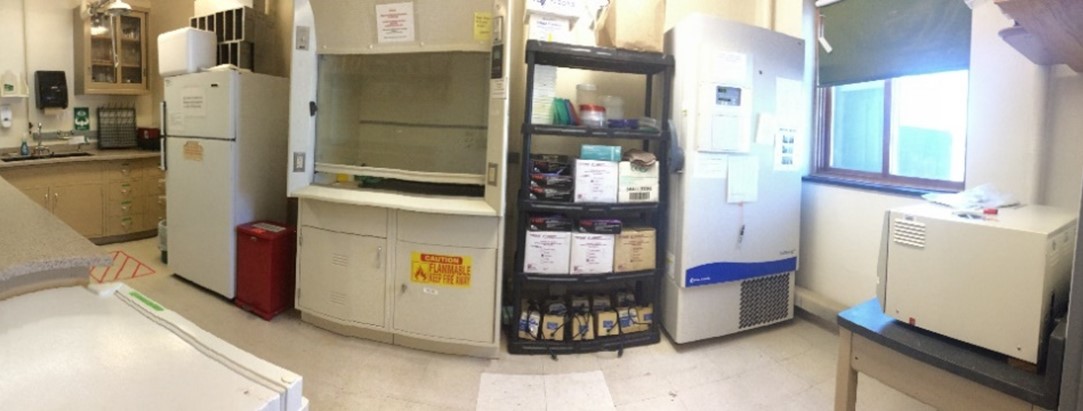
Research laboratory space with fume hood and -80 freezer
Research space with microscopes and clean bench
Research space with laminar flow hood and fume hood

Teaching space
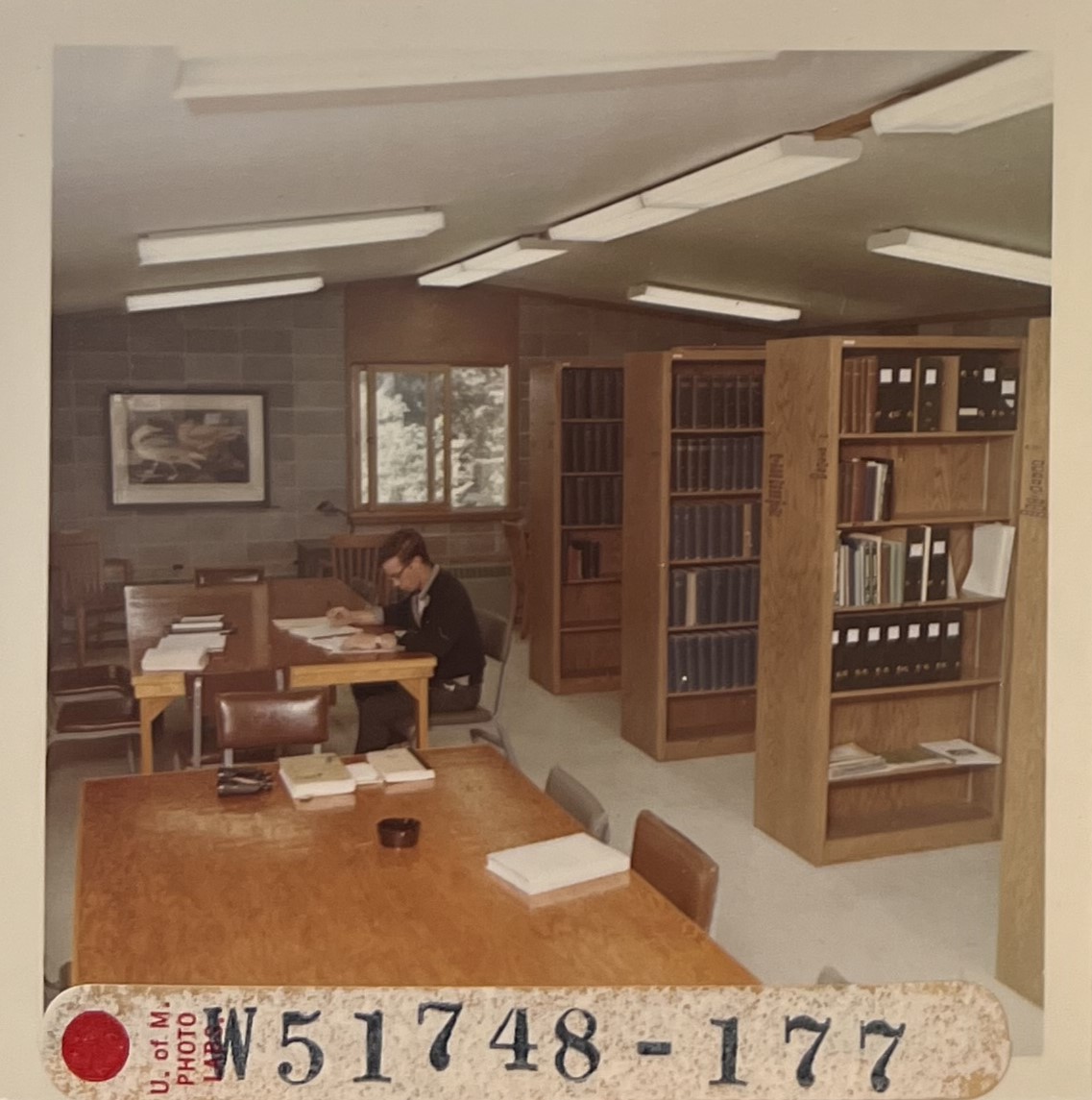
The building formerly housed the station's library, containing paper copies of all student and faculty papers. These collections are now archived on the Twin Cities campus and are accessible through an online database. Our new smaller library collection is housed in the Biome Center Think Write room.
Grey Freshwater Lakeside Laboratory (building #44)
The Lakeside Laboratory (building 44) is one of our oldest buildings on campus, built in 1941 by the National Youth Administration. The upper level houses a flexible classroom/work space and the lower level houses a freshwater lab with a direct water connection to the lake (connected in summer months). Our fish collection is housed in this building. The Lakeside Laboratory is open year-round.

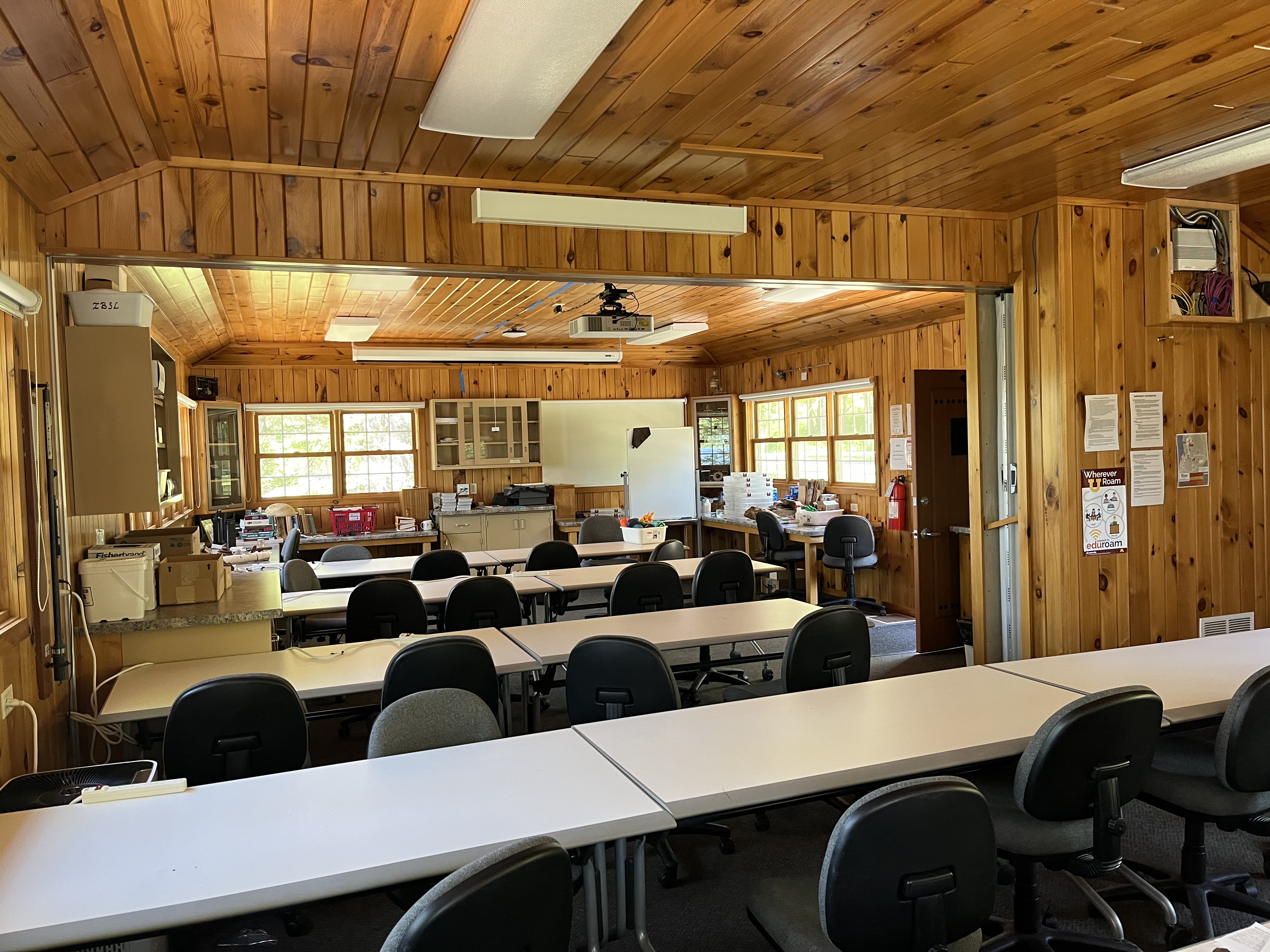
Upper level of the Lakeside Laboratory - classroom setup
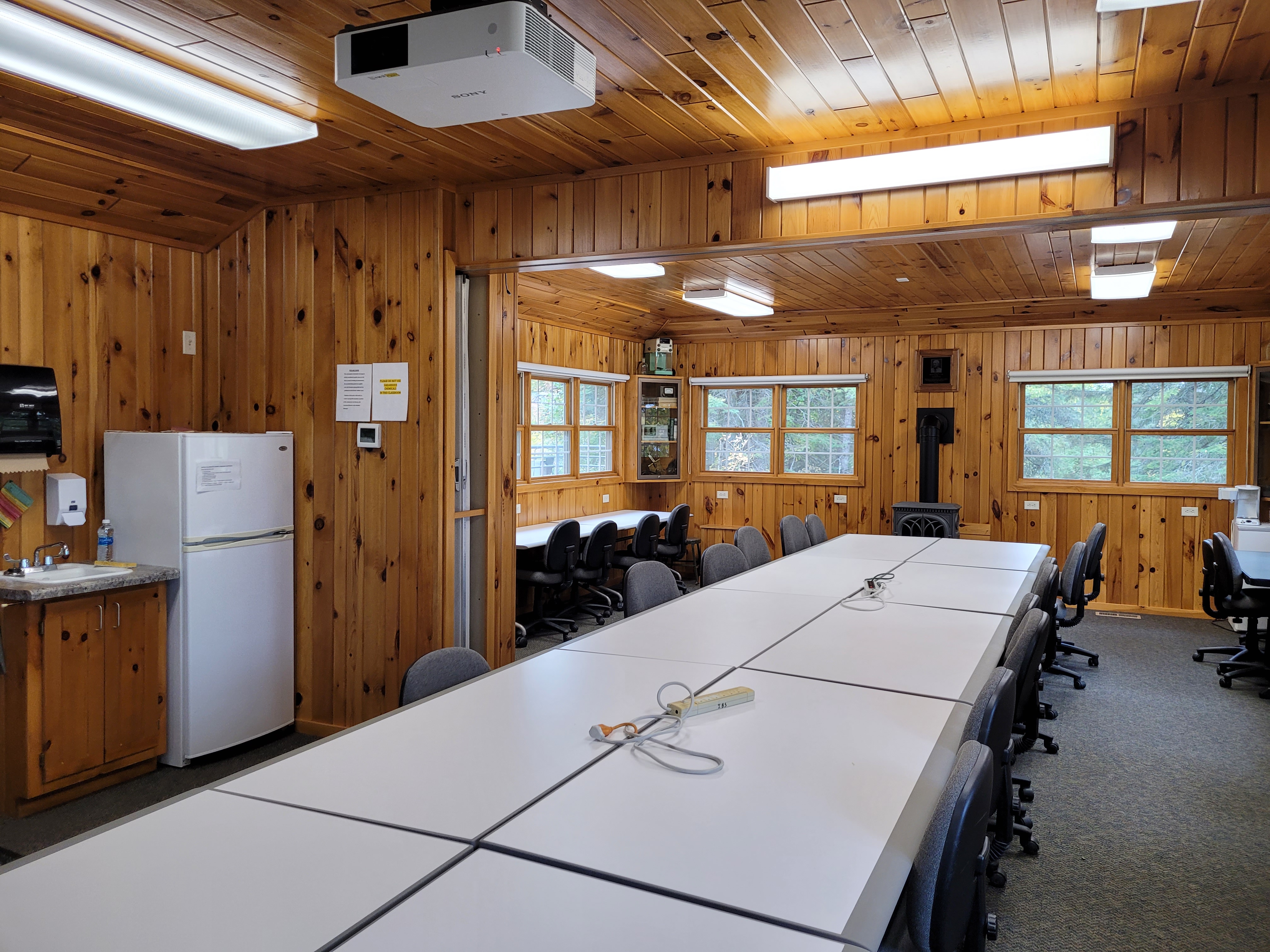
Upper level of the Lakeside Laboratory - conference table setup
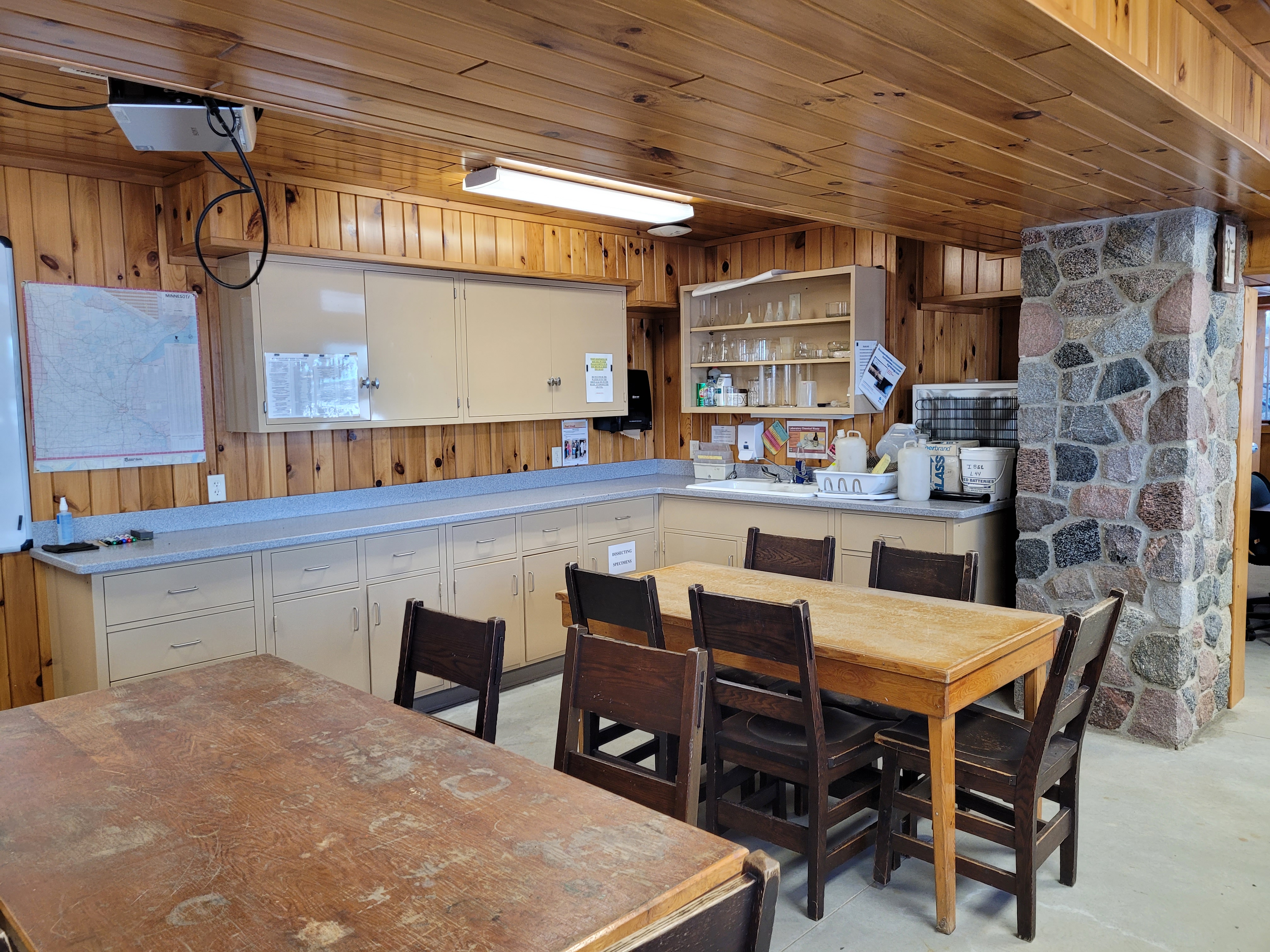
Lower level of the Lakeside Laboratory
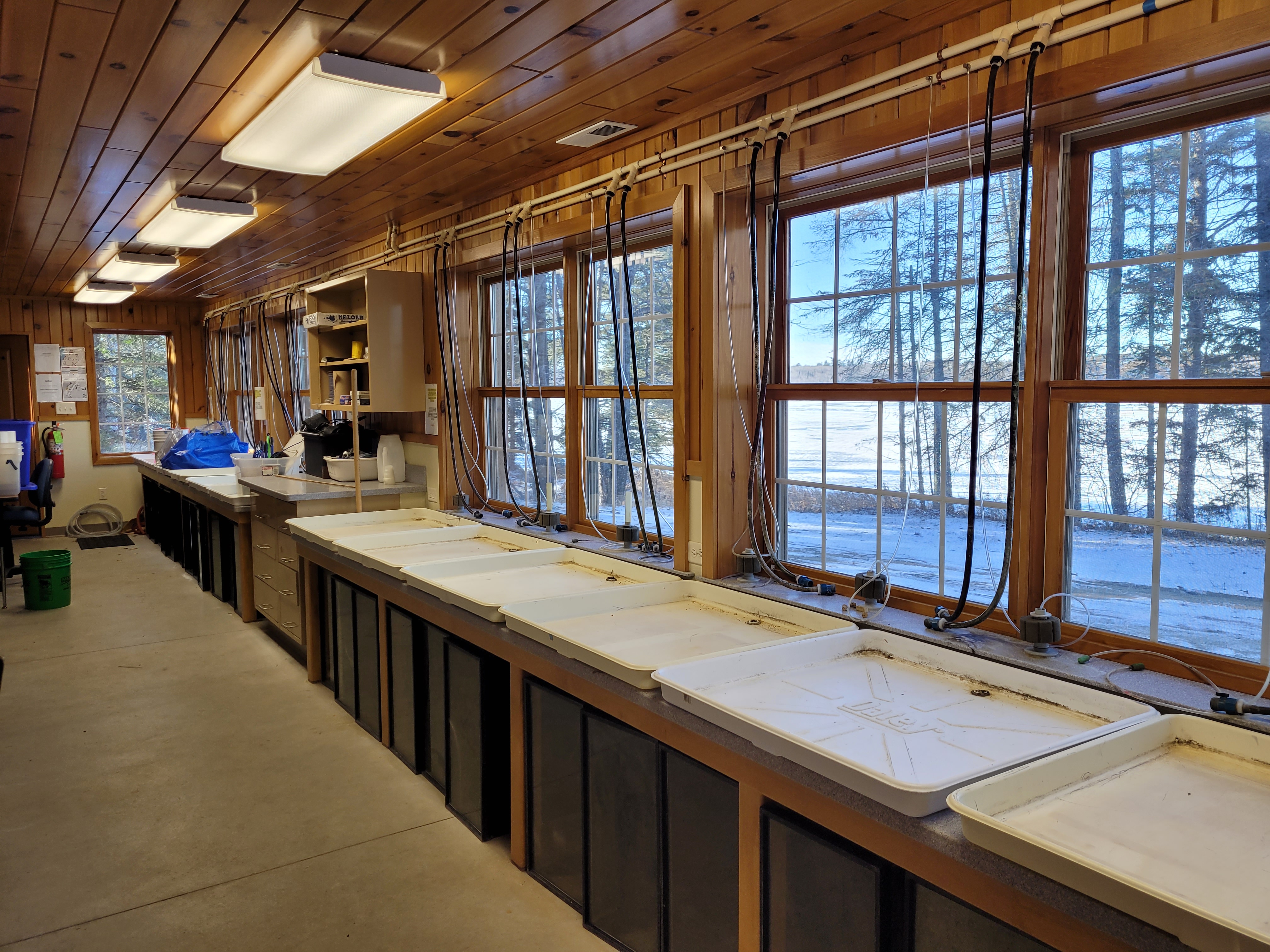
Lower level of the Lakeside Laboratory, showing water lines connected to the lake and trays to hold aquaria
Buildings #40, #45, & #49
Building 40
Building 40 was built in 1946. It houses two teaching spaces and our herbarium and insect collection. This building is open May - October.

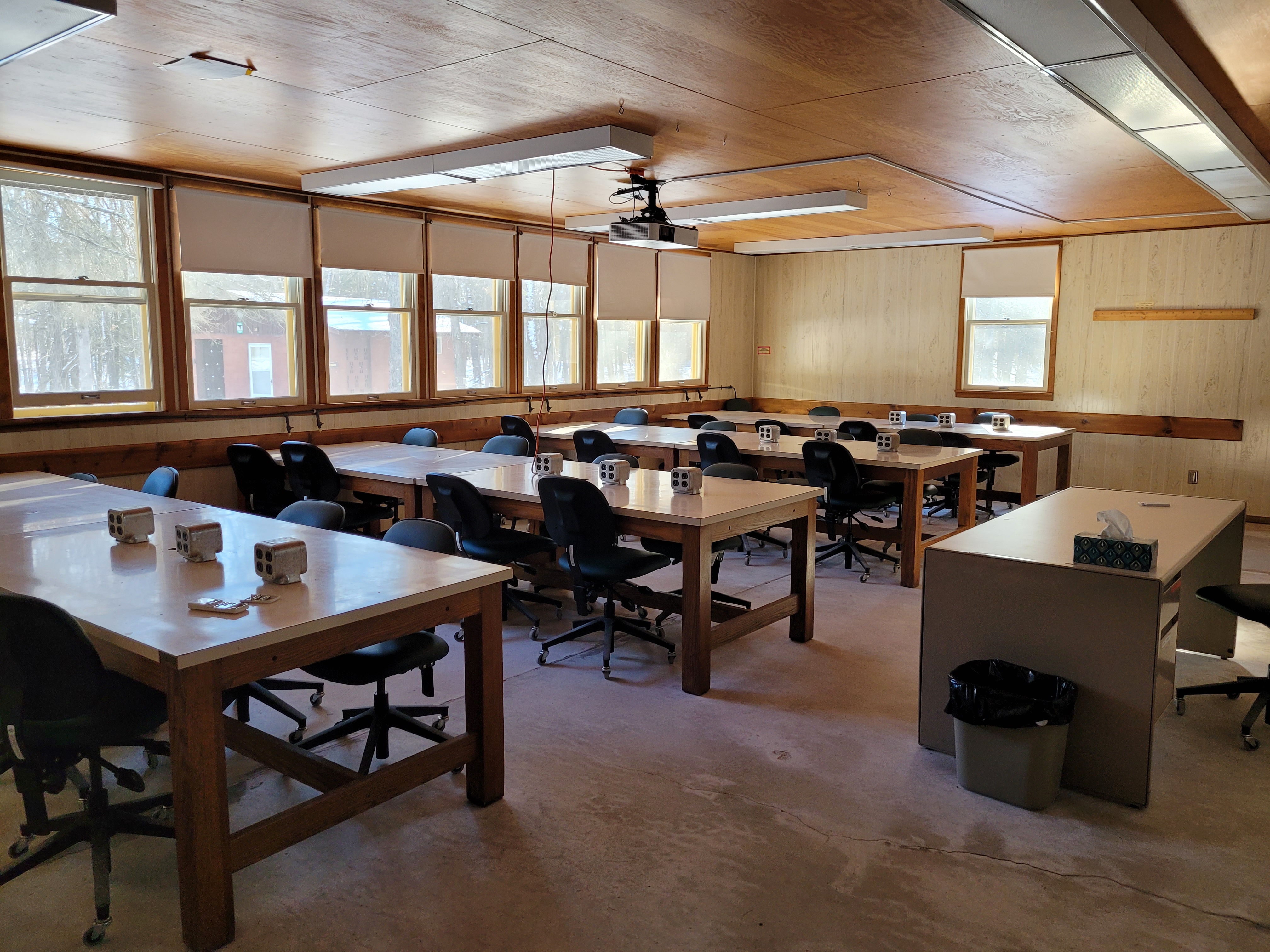
Building 45
Building 45 was built in 1962. It houses two teaching spaces and a necropsy room. This building is open May - October.

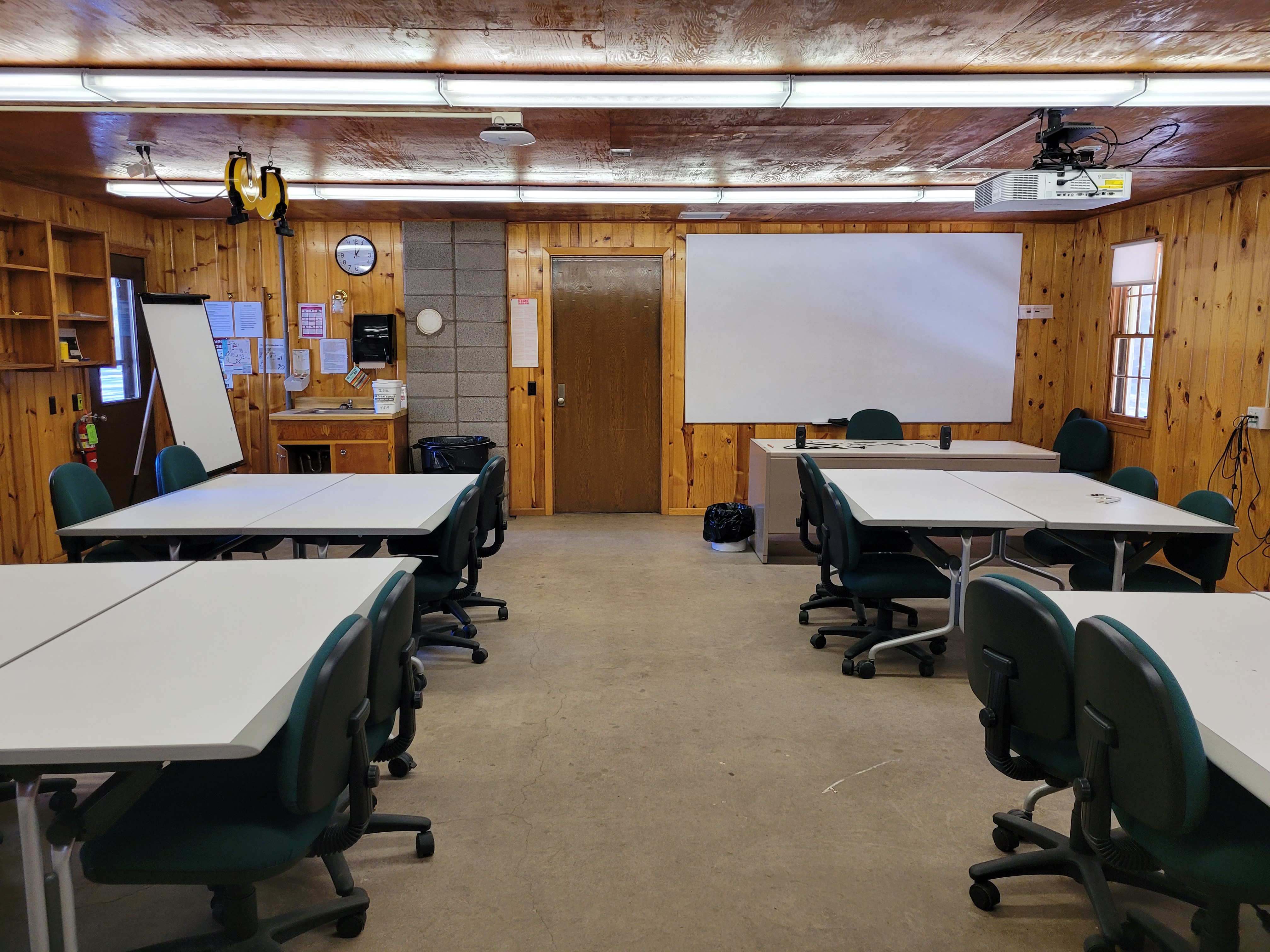
Building 49
Building 49 was constructed in 1970 and houses a teaching space and lab/prep space with fume hood. This building is open May - October.

